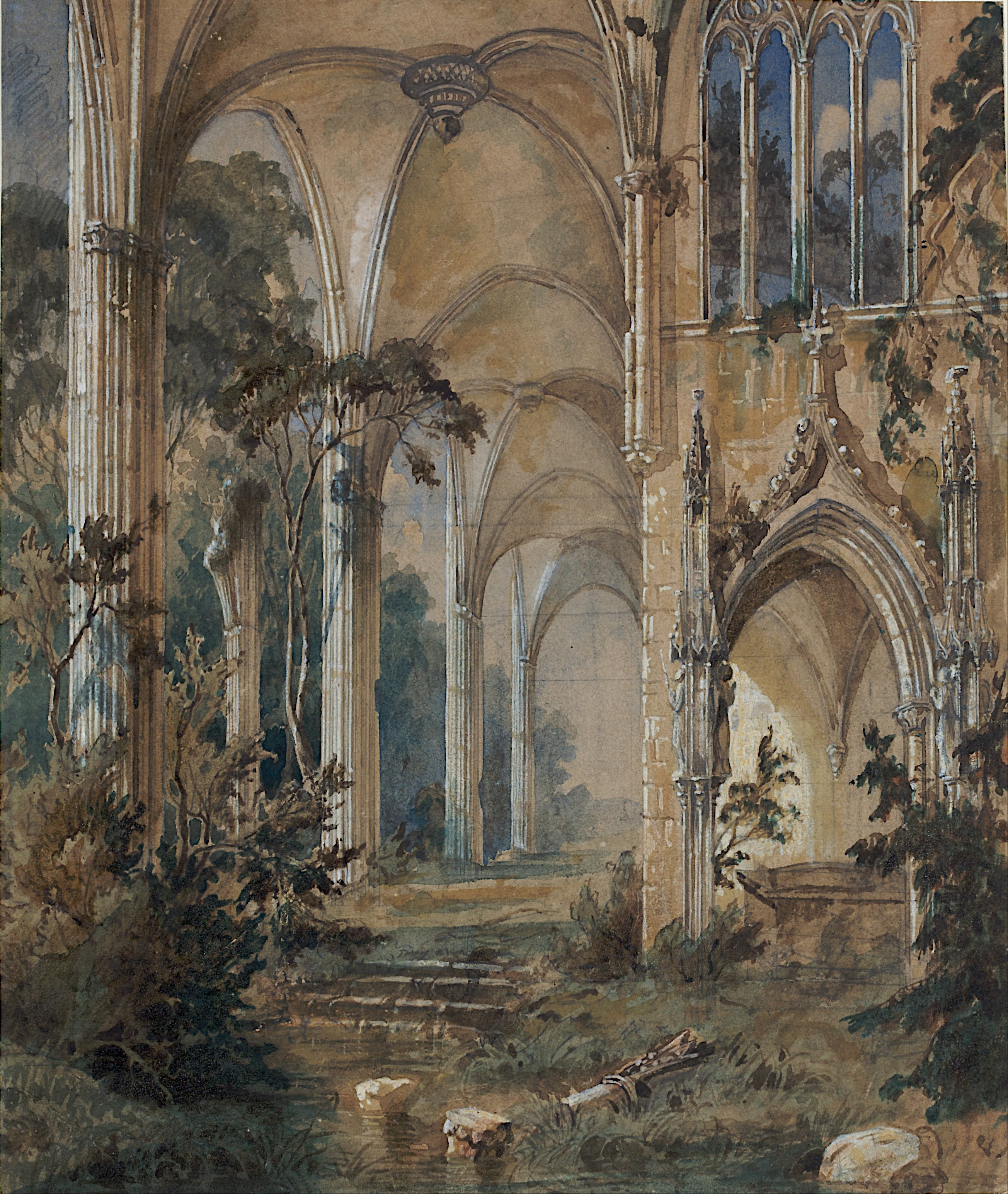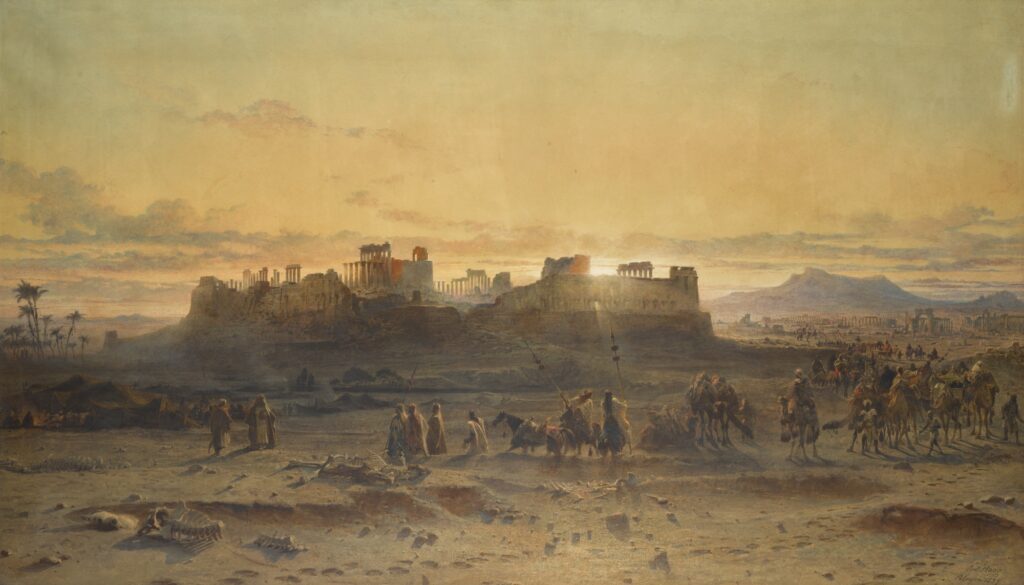4 European Events Harmonizing Art, Nature, and Techno Music
Techno and electronic music have always shared an intimate relationship with art, intertwining rhythms, beats, and melodies with visual expressions...
Celia Leiva Otto 30 May 2024
There is a haunting beauty in architectural ruins. War or the passage of time has ravaged the magnificent feats of earlier civilizations. But in these abandoned structures time appears to stand still and they silently hint at a distant, glorious past. Although now in shambles and inundated by natural elements, these proud monuments stand in testament to the unparalleled skill of great men and women who come before. Ruins serve as an ominous yet mesmerizing reminder of the Latin maxim, sic transit gloria mundi…all glory is fleeting. Here are the ruins immortalized in art.
The depiction of ruins and capriccio or semi-fictitious architectural paintings began during the Renaissance. The Corinthian pillars and colonnades of Classical architecture attracted many artists. Gothic construction also provided great inspiration for ruinscapes. Let’s explore some beautiful artworks depicting architectural decay in all its majesty.
Hubert Robert was a well-known 18th-century artist in the school of Romanticism. While he was well known for both landscapes and capriccio, the moniker “Robert of the Ruins” serves as an indication of his main strength. His impressive oeuvre of about a thousand paintings comprised several depictions of picturesque ruins of Italy and France.
This painting depicts what was once undoubtedly a magnificent colonnade. Now, weeds and plants take over the remains of the imposing structure. The deteriorated wooden fencing adds to the sense of decay. The villagers and cows in the painting instill liveliness to the otherwise sense of desolation. The central figure in the painting is a large statue that once presided over the grand hall. The difference between the size of this statue and that of the living figures emphasizes the grand scale of the ruins.



Sebastian Pether was a talented British landscape artist from the late 18th century. From the limited information available about him it is evident that he lived a life full of financial struggles and personal tragedy. He left behind a legacy of paintings that have a certain poetic essence about them. This quality added a theatrical flair to his largely nocturne compositions.
This incredibly detailed painting is set in the moonlight. There is great depth in its depiction. The radiant moonlight illuminates the ruined Gothic church which dominates one half of the painting. Vines cover the remains of the once-intricate Gothic structure. There is a large but silent body of water dominating another large section of the canvas. This stretches far back into the horizon and ends in an almost unnatural stream in the foreground. Accompanying the background mountains is a silhouette of more construction of an uncertain state.



Giovanni Paolo Panini was an esteemed Roman painter and architect. He managed a prominent workshop which included his son Francesco Panini and Hubert Robert. Panini was highly regarded for his images of Roman vistas. His architectural training no doubt aided his incredibly detailed architectural depictions.
This rendering of classical ruins lays emphasis on sections that have broken away. Some even lie partially submerged in a stream of water. Plants have taken root in the crevices of the formerly formidable structure. The gigantic dimensions of the building appear to dwarf the few figures scattered in the scene



Jules Louis Coignet was a prominent French landscape painter. He exhibited regularly in the salons of Paris. His works have properties of both Idealist and Realist paintings. Some might even be described as Impressionistic. Coignet traveled extensively and this painting is an outcome of a visit to Lebanon. It shows us the mysterious ruins of the Roman empire in Baalbek, now a UNESCO World Heritage site. In Greek and Roman times Baalbek was also known as Heliopolis. At that time, it was home to two of the largest Roman temples of Bacchus and Jupiter respectively.
While classical architecture is evident in the painting, local architectural tradition has clearly influenced the organization and layout of the temples of Baalbek. The painting focuses on the heavily damaged ruins. A large tree dominates the foreground. The foliage is lush and appears to be hiding some ruined structures of an undefined period. Figures in traditional garb, including one on horseback, also appear in the setting.



This painting is a collaboration between the Italian Baroque painters Sebastiano Ricci and his nephew, Marco Ricci. Among the grand but decaying Roman architecture and statuary we see a busy scene of life among the ruins.
Each group of figures appears absorbed in their own lives, and completely oblivious of each other. They also seem to ignore the fascinating beauty of the priceless relics that surround them. The eye is naturally drawn to the large reclining statue that sets the relaxed tone of this painting. It lays sprawled across, staring into the distance as if surveying the lively scenes unfolding before it.



Ramon Martí Alsina was a Spanish painter in the school of Realism. Although paintings of ruins do not appear to be a focus of his legacy, this work is a notable exception.
This painting depicts the ruins of what was no doubt once a grand Catalan palace set under a large overcast sky. The figures bring to life the enormous scale of the ruins and the animated conversation of the two main figures adds a mysterious and almost sinister tone to the otherwise quiet scene. There is a desolate quality to this painting as well as a strong emotional undertone. No trees or plants are hinting at a breeze. Despite this, one can be almost certain of a heavy wind billowing through the hollow remains of this palace.



Carl Blechen was a distinguished 19th-century landscape painter. He was a Professor of Landscape Painting at the Academy of Fine Arts in Berlin.
Here, Biechen shows us a Gothic church with overgrowing plants and wild grass. Plants appear to be gradually taking over the carefully planned ribbed vaults and pointed arches. The glass of the beautiful Gothic windows in the top half of the painting is intact and clear and gives us a hint of a bright blue sky. Here, the painter has used watercolors which have given the painting a bright and luminescent quality. One can almost be certain of the peaceful calm of this location in the daytime (and be sure that it is haunted at night!).



Johan Barthold Jongkind was a Dutch painter of the 19th century of the school of Impressionism. His main focus of work was marine landscapes, particularly those depicting the Seine.
This painting portrays the ruined Château de Rosemont in France in the style of the Dutch Golden Age. There are a few people and some cattle in this idyllic setting. Jongkind has chosen to use a low horizon, allowing a substantial emphasis on the sky.



Louis-Jacques-Mandé Daguerre was a French artist and photographer. He was also the proprietor of the Daguerreotype process. This is a photography technique which involves iodine-sensitized silvered plates and mercury vapor. When he was 16, Daguerre became an apprentice to an architect and trained as a draughtsman. This allowed him to hone his artistic skills. He went on to train as a stage designer for the Paris Opera and assisted in designing panorama paintings for entertainment events.
This painting is a theatrical rendition of the Holyrood Abbey of the Canons Regular in Edinburgh, Scotland. The chapel was founded in 1128 and has been in ruins since the 18th century. The painting shows the famous chapel in romantic decay on a moonlight night. The focus on the architectural details is impeccable and not affected by the advanced hour and low lighting conditions in the slightest. In fact, the nocturnal effect adds to the feeling of mystery.



Ascanio Luciano was an Italian architectural painter, skilled in capriccio compositions. Although much of his personal life remains an enigma, he spent his entire career in Naples. In this work, Luciano has depicted the tale of Christ and the Adulteress. This dramatic composition illustrates the Biblical passage from the Gospel of John, set in classical ruins.
In this passage, a group of scribes and Pharisees interrupted Jesus at a temple as he was giving a sermon. They had dragged along with them an ill-fated woman who they had caught red-handed in the act of adultery. The angry mob demanded her condemnation by Jesus and urged him to prescribe punishment by stoning. In response, Jesus famously declared “he who is without sin must cast the first stone.”



Carl Haag was a German painter and traveler. He befriended the leader of the Sebbah tribe, Sheikh Medjuel el Mezrab and his wife, the former Lady Ellenborough. This friendship resulted in a passage for Haag to Palmyra in Syria. Undoubtedly inspired by this visit, he painted some inspiring scenes. This beautiful painting depicts the ruins of Palmyra and the beauty of the Syrian terrain in watercolor.
The classical ruins in the center of this painting are its main focus. Countless figures are shown throughout the desert landscape along with the skeletal remains of animals. There are also some camels shown in the foreground. The ruins in the far distance, visible in the left corner, add depth to this beautiful and softly illuminated landscape. The setting sun, peeking through the Corinthian pillars is evocative of the power of the ancient city of Queen Zenobia.
DailyArt Magazine needs your support. Every contribution, however big or small, is very valuable for our future. Thanks to it, we will be able to sustain and grow the Magazine. Thank you for your help!